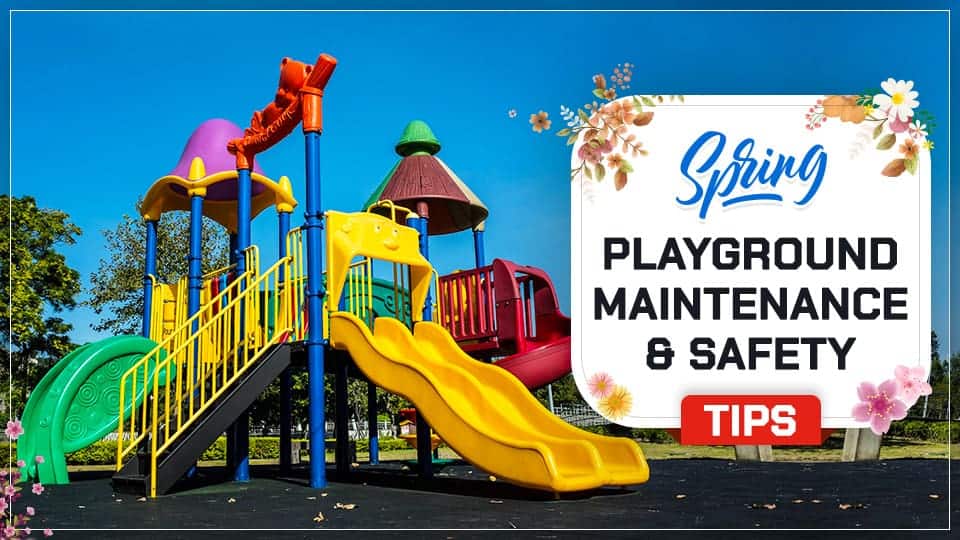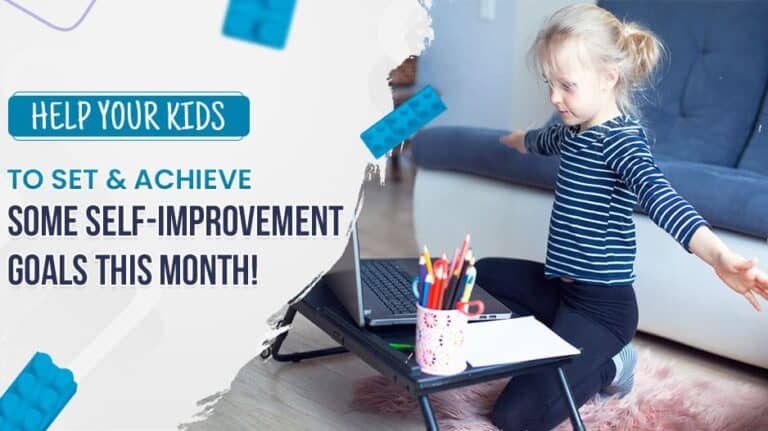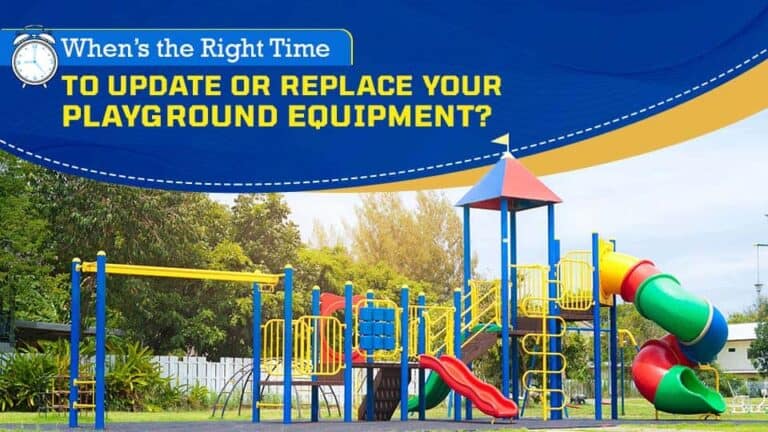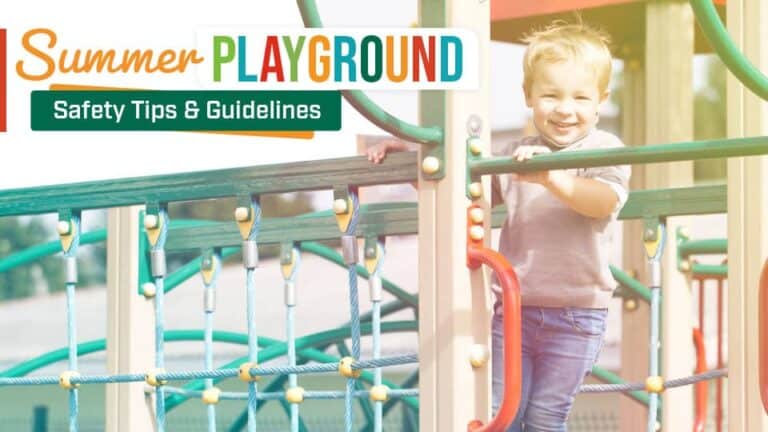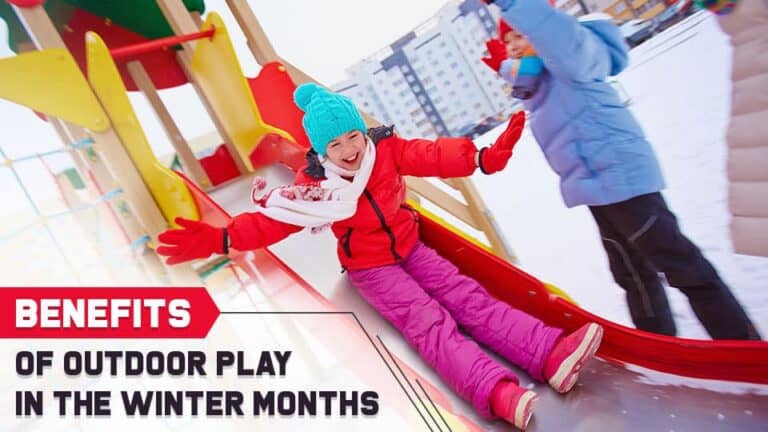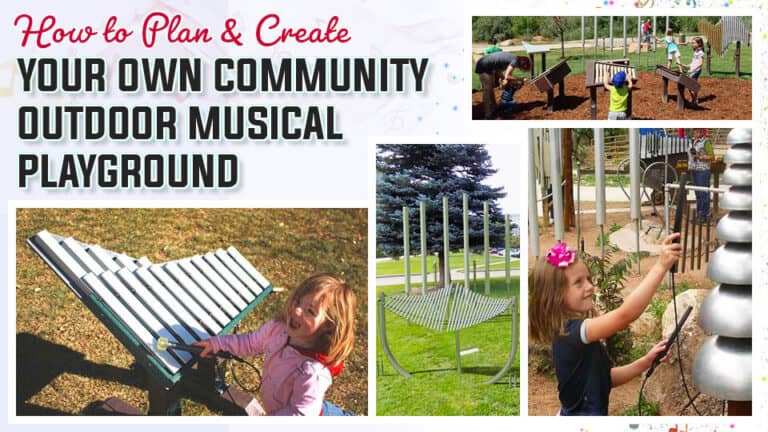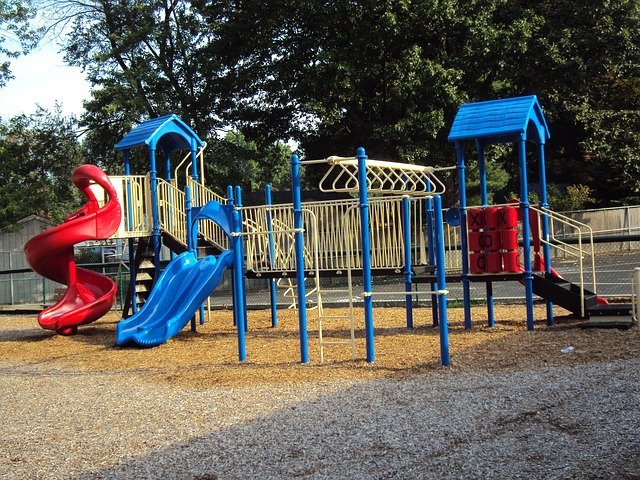Spring Playground Maintenance & Safety Tips
Spring is Here!
Well, not technically. Spring doesn’t officially arrive until March 20. Nevertheless, it’s already starting to feel like spring in the Southeast. The days are getting longer, the temps are trending warmer, and people are itching to get outside to do some yard work, and kids are itching to get outside to play. And if you’re part of an organization which owns and maintains a playground facility, it’s time to take the necessary steps to make sure your outdoor playground equipment is safe and ready to use.
Every school, preschool, parks & rec department, HOA, and the municipal group should have a maintenance schedule in place for taking care of their playground equipment. This is important for the sake of playground safety, and it’s also important in terms of providing for the maximum longevity of your installed playground equipment. Some things you’ll want to check and maintain include verifying appropriate depths of safety surfacing, checking for loose hardware, looking for any evidence of vandalism, and identifying any items or issues that could pose a potential safety threat to children who will be making use of your playground equipment.
Hardware Components You Should Check on a Regular Basis
You should start by learning the particulars of your swing sets, and any other features you have in place at your playground facility. Here are some of the most common hardware components used on swing sets and other playground equipment:
• Fasteners
Most every commercial playground feature is secured with a series of bolts and nuts, or preferably with some type of security fasteners. These are generally designed to be tamper-proof, but there’s still the potential for any type of fastener to work itself loose over time. You’ll want to look over all of your equipment connections, and make sure everything is tight and secure. If not, you’ll want to take steps to address that before you “release the children” onto your playground.
• Swing set chains
In most cases, a chain design is used to link every individual swing seat to the swing set structure. These chains are typically comprised of galvanized or zinc-coated steel, and often include a protective vinyl or rubber coating. These should be inspected on a regular basis, and any faulty or excessively-worn links should be replaced.
• Swing set hangers
Hangers are the hardware which attaches each swing chain to the top rail of the swing set support framework. These may be welded in, or they can also be designed as detachable components. Check these periodically to verify component soundness and integrity.
• Swing set S-hooks or shackles
S-hooks are often used to link the chain to the top hangers, and to link each swing seat to the chain. You’ll want to make sure that each S-hook is fully closed, with no gaps. Sometimes shackles can be used in place of S-hooks, as they make for an easier seat attachment and offer simpler options for seat replacement. Since both S-hooks and shackles are both moving parts, each should be examined for any signs of excessive wear-and-tear.
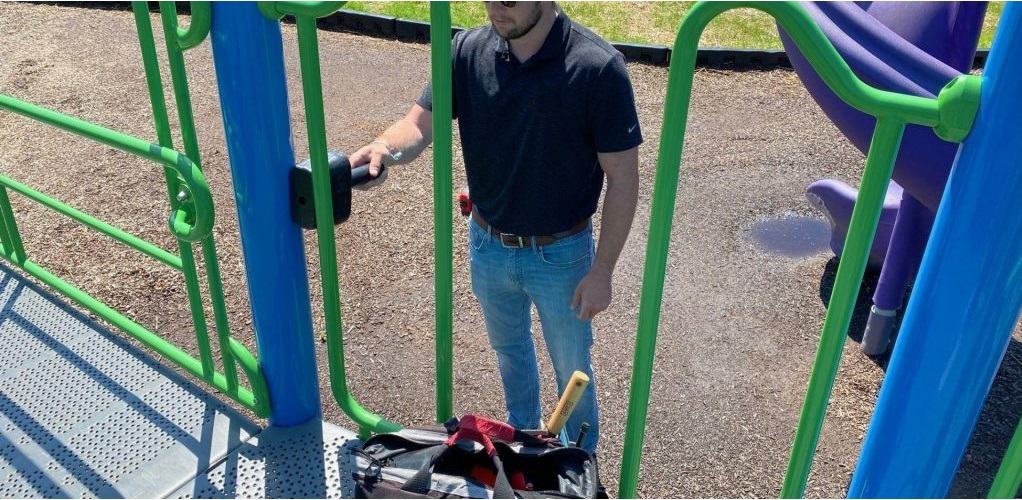
Spring Checklist for Playground Maintenance
Whenever it’s time to inspect and maintain your commercial playground and any playground equipment sets, it’s important to understand what you should be looking for when it comes to the play features themselves, as well as the surrounding playground environment. Here’s a helpful checklist including some things to which you’ll want to pay particular attention:
• Equipment damage
Visible play equipment damage is typically one of the easier things to spot, and a broken piece of equipment always necessitates prompt replacement. For example, any rips, tears, or cracks in a swing seat means that its integrity has been compromised. You should go ahead and remove any damaged or broken swing seats immediately, and leave those spots open until you’re able to have a replacement installed.
• Wear-and-tear issues
It’s not just about looking for cracks or broken pieces. It’s also important to check the finish of any child-facing features, and make sure there are no splinters or other rough spots. Any areas which aren’t smooth should be sanded and refinished. You should also check any metal features for rust. If you happen to find any surface rust, these areas will need to be sanded and refinished, as well.
• Check for sharp edges
Sharp edges or other protruding points are also issues you’ll want to look for on all of your installed playground features. Sharp edges and protrusions are hazardous in any play environment, and any that you happen to find will absolutely need to be corrected for the sake of safety.
• Hardware, connections, and anchoring
We mentioned several examples of hardware and connections above. You’ll want to check the condition of these items, and make sure all connections are snug and secure. Replace any missing or damaged items at once. And don’t forget to look down, too – you need to make sure that every other play feature is still properly anchored to the ground, without any amount of wiggle or give. If any anchors show any play or give, you’ll want to take steps to re-secure these anchors.
• Proper swing and play feature mounting, with no modifications
Hopefully, your playground features and elements were installed correctly, to begin with, but in any case, you should seek to verify that each feature is installed properly according to the manufacturer’s specifications. Seats shouldn’t be facing the wrong way, and no other changes or modifications should be evident. Play features are designed to be installed a certain way for a reason, and for the sake of both usability and safety, it’s important to follow the manufacturer’s recommendations for installation.
• Check safety surfacing depth
No playground equipment inspection is complete without also verifying the condition and depth of the safety surfacing you have in place. How much safety surfacing you need will depend upon the type of material you’re using (e.g. PIP, bonded rubber, shredded rubber, rubber tile, synthetic turf, loose-fill engineered wood fiber). A good rule of thumb to shoot for with loose-fill surfacing is a minimum of 12 inches. Any loose-fill should be raked and fluffed on a regular basis too, in order to counter the effects of compaction and to help prolong the life of your safety surfacing material.
• Do a final sweep for trash and debris
Whenever doing any type of playground maintenance, it’s also a good idea to do a quick sweep of the entire playground area. Any trash or fallen debris present poses a potential trip hazard for children at play. Keeping your playground properly picked up also creates a more positive impression for both first-time visitors and regular patrons of your facility.
Let Carolina Recreation & Design Take Care of Your Commercial Playground Needs!
We hope you’ll find these playground “spring cleaning” tips to be helpful. But what if you don’t yet have your own commercial playground, or are ready to plan an expansion of your existing playground facility? If you’re located in NC, SC, VA, or TN, Carolina Recreation & Design is here to provide for your commercial playground, outdoor recreation equipment, and outdoor site development needs! We can take care of everything from site design, to site preparation, to equipment installation, to safety surfacing, fabric shades, picnic shelters, seating areas, outdoor buildings, standalone restrooms, and other key site amenities and furnishings.
Simply put, Carolina Recreation & Design isn’t just a vendor or a dealer; we’re really a complete outdoor solution provider! We’re happy to partner with local schools, preschools, daycares, churches & faith centers, hospitals, parks, HOAs, community centers, businesses, municipalities, and more. Got questions? Ready to get started? You can connect with us through this simple form, or for a faster response, just give us a call at (704) 664-1833! Carolina Recreation & Design has all your commercial playground, recreation equipment, and site development needs covered!

